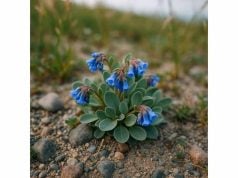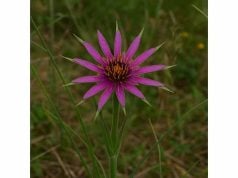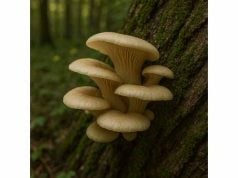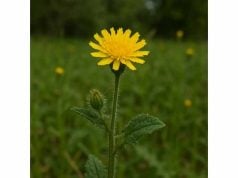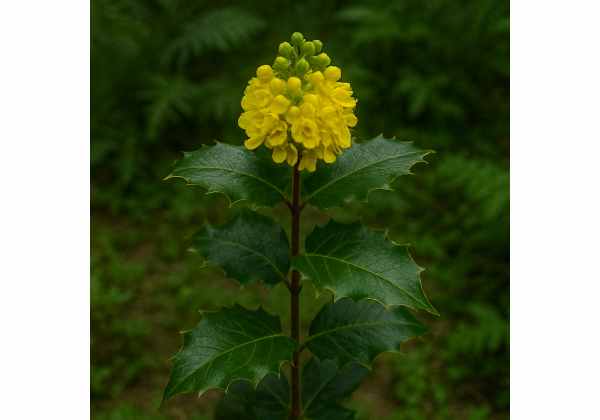
Oregon grape root is a time-honored herbal remedy renowned for its potent medicinal properties and unique bioactive profile. Extracted from the roots of Oregon grape (commonly Berberis aquifolium), this herb is celebrated for its rich content of berberine and other alkaloids, which provide powerful antioxidant, antimicrobial, anti-inflammatory, and digestive benefits. Traditionally used by Native American tribes and early European settlers for skin conditions, liver detoxification, and gastrointestinal support, Oregon grape root has become a staple in modern herbal medicine. Today, it is utilized in various forms including tinctures, capsules, teas, and topical preparations, offering a holistic approach to health and well-being.
Table of Contents
- Plant Profile and Identification
- Phytochemistry and Active Compounds
- Health Benefits and Essential Qualities
- Practical Applications and Safety Protocols
- Research Insights and Key Findings
- FAQ
Plant Profile and Identification
Oregon grape root is derived from Oregon grape, a deciduous shrub native to the temperate regions of North America, particularly the Pacific Northwest. Botanically known as Berberis aquifolium (sometimes classified under Mahonia aquifolium), this plant is distinguished by its holly-like leaves, vibrant yellow flowers, and deep blue-purple berries. The root system, robust and fibrous, is the primary source of the herb’s medicinal properties. Traditionally, indigenous peoples used Oregon grape root to treat a variety of ailments, ranging from skin infections to digestive disturbances.
Taxonomy and Botanical Classification
Oregon grape belongs to the Berberidaceae family, which includes other medicinal shrubs known for their bright yellow alkaloids. The plant’s taxonomy reflects its distinctive appearance and medicinal applications. The genus Berberis is well-known for its production of berberine—a bioactive alkaloid with antimicrobial and anti-inflammatory properties. Oregon grape is an evergreen shrub that forms dense thickets, which contribute to its resilience and adaptability in diverse ecological niches.
Morphological Characteristics
The visual identification of Oregon grape is marked by several distinctive features:
- Leaves: The leaves are oval, glossy, and spiny along the margins, resembling those of holly. Their dark green color provides a striking contrast to the plant’s bright flowers and berries.
- Flowers: In early spring, clusters of small, yellow, star-shaped flowers bloom, releasing a mild fragrance that attracts pollinators.
- Berries: Following the flowering period, the plant produces small, tart berries that turn blue or purple as they mature.
- Roots: The root system is thick, fibrous, and has a characteristic bitter taste, which is indicative of its high berberine content.
Growth Conditions and Natural Habitat
Oregon grape thrives in well-drained, rocky soils and prefers full sun to partial shade. It is well-adapted to dry, arid climates as well as moist, forested environments, making it a versatile plant in both wild and cultivated settings. The plant’s hardy nature allows it to flourish in poor soil conditions and withstand periods of drought, which is why it is often found in rocky outcrops and open woodlands. Its ecological role includes soil stabilization and providing a habitat for various wildlife species, including birds and pollinators.
Historical and Ethnobotanical Significance
Historically, Oregon grape has held a significant place in traditional medicine. Native American tribes revered the plant for its healing properties, using the root to treat skin conditions, liver ailments, and digestive issues. Early European settlers adopted these practices, incorporating Oregon grape root into their herbal pharmacopeia. The plant’s vibrant yellow alkaloids, particularly berberine, were considered potent healing agents that could cleanse wounds and treat infections. Today, its traditional uses are supported by modern scientific research, affirming its role as a powerful natural remedy.
Cultivation and Propagation
Oregon grape can be propagated from seeds, cuttings, or divisions of established clumps. Gardeners appreciate its low-maintenance nature and its ability to spread naturally, forming attractive hedges or ground covers. Ideal cultivation involves planting in full sun with well-drained soil and minimal water once established. Regular pruning helps maintain a compact shape and encourages more prolific blooming, thereby enhancing its ornamental and medicinal value.
Ecological and Environmental Benefits
In addition to its medicinal uses, Oregon grape plays a crucial ecological role. Its dense growth habit and extensive root system help prevent soil erosion, while its flowers and berries attract pollinators and birds, contributing to local biodiversity. The plant’s resilience to harsh environmental conditions also makes it an excellent choice for sustainable landscaping and restoration projects, particularly in areas prone to drought.
Overall, the plant profile and identification of Oregon grape root highlight a robust and versatile herb that has been integral to traditional medicine and ecological balance for centuries.
Phytochemistry and Active Compounds
The therapeutic properties of Oregon grape root are largely attributed to its complex phytochemical makeup. Advanced analytical techniques have identified a variety of bioactive compounds that work synergistically to confer its medicinal benefits. These compounds not only provide the herb’s characteristic bitter taste but also underpin its diverse pharmacological actions.
- Berberine
Berberine is the most notable alkaloid found in Oregon grape root. This yellow, bitter compound is well-known for its antimicrobial, anti-inflammatory, and antidiabetic properties. Berberine works by inhibiting the growth of various pathogens and modulating metabolic pathways, which helps in managing blood sugar levels and improving cardiovascular health. Its ability to reduce inflammation and oxidative stress makes it a cornerstone of the herb’s medicinal applications. - Palmatine
Another significant alkaloid in Oregon grape root is palmatine. Structurally similar to berberine, palmatine exhibits antimicrobial and anti-inflammatory properties. It plays a supportive role in enhancing the herb’s overall therapeutic effects and is believed to contribute to its ability to modulate the immune system. Palmatine’s presence further validates the traditional use of Oregon grape root as a natural remedy for infections and inflammatory conditions. - Jatrorrhizine
Jatrorrhizine is a lesser-known alkaloid with promising antimicrobial and anti-inflammatory effects. It contributes to the overall efficacy of Oregon grape root by enhancing the action of berberine and other related compounds. Jatrorrhizine is also being studied for its potential role in cancer prevention, as it appears to inhibit the proliferation of certain tumor cells. - Oxyacanthine
This alkaloid is present in smaller quantities but is significant due to its antimicrobial and antispasmodic properties. Oxyacanthine contributes to the herb’s ability to relieve gastrointestinal discomfort and support digestive health by reducing spasms in the digestive tract. - Flavonoids (e.g., Quercetin and Kaempferol)
Flavonoids in Oregon grape root, such as quercetin and kaempferol, provide additional antioxidant and anti-inflammatory benefits. These compounds scavenge free radicals, protecting cells from oxidative damage and reducing chronic inflammation. Their synergistic interaction with the alkaloids enhances the overall medicinal profile of the herb. - Phenolic Acids (e.g., Caffeic Acid and Ferulic Acid)
Phenolic acids present in Oregon grape root add to its antioxidant capacity. Caffeic acid and ferulic acid help protect against cellular damage by neutralizing free radicals. They also contribute to the herb’s anti-inflammatory effects and support detoxification processes in the liver. - Essential Oils
Although present in lower concentrations, the essential oils in Oregon grape root contain a blend of volatile compounds that enhance its antimicrobial and anti-inflammatory properties. These oils contribute to the herb’s distinctive aroma and are effective in both topical and internal applications.
The complex interplay of these phytochemicals is what renders Oregon grape root a powerful natural remedy. Advanced research continues to reveal new insights into the molecular mechanisms of these compounds, further establishing the herb’s role in modern herbal medicine.
Health Benefits and Essential Qualities
Oregon grape root is widely acclaimed for its broad spectrum of health benefits, which are directly attributable to its rich phytochemical composition. The herb offers a holistic approach to wellness, supporting various physiological systems and addressing multiple health concerns.
Antioxidant and Anti-Aging Effects
One of the primary health benefits of Oregon grape root is its exceptional antioxidant capacity. Berberine, along with flavonoids and phenolic acids, effectively neutralizes free radicals, thereby protecting cells from oxidative damage. This protective effect is crucial for slowing the aging process and reducing the risk of chronic diseases such as cardiovascular disease, diabetes, and neurodegenerative disorders. Regular consumption of Oregon grape root in the form of teas, tinctures, or supplements can help maintain youthful skin, improve cellular regeneration, and support overall longevity.
Anti-Inflammatory and Immune-Modulating Properties
Chronic inflammation is a key contributor to many modern ailments, including arthritis, inflammatory bowel disease, and metabolic syndrome. Oregon grape root’s potent anti-inflammatory agents—primarily berberine, palmatine, and jatrorrhizine—work synergistically to reduce inflammation by inhibiting pro-inflammatory cytokines. These compounds also modulate the immune system, enhancing its ability to fight infections and maintain balance. As a result, Oregon grape root is often recommended as a natural immune booster and an adjunct therapy for inflammatory conditions.
Antimicrobial and Antiviral Benefits
Oregon grape root is renowned for its robust antimicrobial and antiviral properties. Its high berberine content is particularly effective in inhibiting the growth of bacteria, viruses, and fungi. This makes the herb an excellent natural remedy for combating infections of the respiratory, digestive, and urinary tracts. Additionally, its antimicrobial action is beneficial in managing skin conditions, such as acne and fungal infections, and in preserving food by preventing microbial spoilage.
Digestive Health and Gastrointestinal Support
Traditionally, Oregon grape root has been used to support digestive health. The herb’s bitter compounds stimulate the production of digestive enzymes and bile, enhancing nutrient absorption and promoting healthy digestion. Its antimicrobial properties help maintain a balanced gut microbiota, which is essential for preventing gastrointestinal infections and reducing symptoms of indigestion, bloating, and cramping. Oregon grape root is often incorporated into herbal teas and tinctures aimed at soothing the digestive tract.
Cardiovascular and Metabolic Benefits
The bioactive compounds in Oregon grape root contribute to cardiovascular health by improving lipid profiles and reducing oxidative stress in blood vessels. Berberine, in particular, has been shown to help regulate blood sugar levels and lower cholesterol, thereby supporting metabolic function and reducing the risk of heart disease. These properties make Oregon grape root a promising natural remedy for individuals with metabolic syndrome or those seeking to maintain a healthy cardiovascular system.
Liver Detoxification and Immune Support
Oregon grape root has been traditionally used as a liver tonic, supporting detoxification processes and enhancing overall liver function. The herb’s bitter constituents stimulate bile flow, which aids in the elimination of toxins from the body. Additionally, its immune-enhancing properties help strengthen the body’s natural defenses, making it an effective remedy for supporting overall wellness during times of stress or illness.
Skin Health and Topical Applications
Oregon grape root’s antimicrobial and anti-inflammatory properties extend to dermatological uses. When applied topically, preparations containing Oregon grape root extract can help treat skin conditions such as acne, eczema, and fungal infections. The antioxidant compounds in the herb protect the skin from environmental damage and support the healing of wounds and irritations. Natural skincare products infused with Oregon grape root are increasingly popular as safe and effective alternatives to synthetic treatments.
Cognitive Function and Mood Enhancement
Emerging research suggests that the antioxidant and anti-inflammatory effects of Oregon grape root may also benefit cognitive function. By reducing oxidative stress in neural tissues, the herb may help protect against neurodegenerative conditions and improve mental clarity. Some studies indicate that berberine can have mood-stabilizing effects, potentially alleviating symptoms of depression and anxiety. Incorporating Oregon grape root into a holistic wellness regimen may thus support both physical and mental health.
Holistic Integration for Overall Wellness
Oregon grape root’s versatility allows it to be easily integrated into various aspects of daily health practices. Whether consumed as a supplement, brewed into a tea, or applied topically in skincare formulations, its diverse range of benefits makes it a valuable natural remedy for a holistic approach to wellness. Regular use of Oregon grape root can help maintain balanced bodily functions, support detoxification, and enhance the overall quality of life.
In summary, the essential qualities and health benefits of Oregon grape root are extensive and multifaceted. Its potent antioxidant, anti-inflammatory, antimicrobial, and digestive properties make it a powerful ally in preventing and managing a variety of health conditions. By incorporating Oregon grape root into daily routines, individuals can harness its natural healing potential and support long-term wellness.
Practical Applications and Safety Protocols
Oregon grape root is a versatile herb that can be used in a multitude of ways—ranging from culinary and medicinal applications to cosmetic and wellness products. However, to maximize its benefits and minimize any potential risks, it is important to follow proper usage guidelines and safety protocols.
Culinary and Nutritional Applications
Oregon grape root is not only valued for its medicinal properties but also for its distinctive, bitter flavor, which can enhance a variety of dishes.
- Herbal Teas and Infusions: Steep 1 teaspoon of dried Oregon grape root in boiling water for 10–15 minutes to make a tea that aids digestion and provides antioxidant support.
- Flavor Enhancer: Use ground Oregon grape root as a spice in stews, soups, or sauces to impart a subtle bitter note that complements other flavors.
- Culinary Extracts: Incorporate Oregon grape root extracts into marinades, salad dressings, or nutritional supplements to boost both flavor and health benefits.
- Herbal Blends: Combine Oregon grape root with other herbs such as dandelion, milk thistle, or ginger to create synergistic blends that promote liver detoxification and digestive health.
Medicinal and Therapeutic Uses
Traditionally, Oregon grape root has been used for a variety of medicinal purposes, and modern research continues to support many of these applications.
- Tinctures and Liquid Extracts: Oregon grape root tinctures are highly concentrated and are typically taken by diluting 10–20 drops in water or juice, up to three times daily. These tinctures are used to support liver function, improve digestion, and bolster the immune system.
- Capsules and Powders: Standardized capsules and powders of Oregon grape root provide a convenient way to incorporate its bioactive compounds into daily routines. Follow the dosage recommendations provided by the manufacturer, generally one to two capsules per day.
- Topical Preparations: Oregon grape root extracts are formulated into creams, ointments, and salves for external use. These products can help treat skin conditions such as acne, eczema, and fungal infections by leveraging the herb’s antimicrobial and anti-inflammatory properties.
- Aromatherapy and Inhalation: Although less common, the essential oil derived from Oregon grape root may be used in aromatherapy to support respiratory health. Always dilute essential oils properly before inhalation or topical use to avoid irritation.
Dosage Recommendations and Preparation Guidelines
To ensure both efficacy and safety when using Oregon grape root, adhere to the following guidelines:
- Herbal Tea: Use approximately 1 teaspoon of dried root per cup of water. Steep for 10–15 minutes and consume 2–3 cups daily.
- Tinctures: A typical dosage is 10–20 drops diluted in water or juice, taken up to three times a day.
- Capsules/Powders: Follow the specific instructions on the product packaging; usually, one to two capsules per day is adequate.
- Topical Applications: Apply a thin layer of the product to the affected area up to three times daily. Always perform a patch test prior to broader application.
Safety Considerations and Potential Side Effects
While Oregon grape root is generally considered safe, some individuals may experience adverse effects if used improperly.
- Allergic Reactions: Those with known allergies to plants in the Berberidaceae family should exercise caution. Discontinue use if symptoms such as itching, rash, or swelling occur.
- Pregnancy and Breastfeeding: Pregnant or nursing women should consult with a healthcare provider before using Oregon grape root, especially in concentrated forms.
- Drug Interactions: Oregon grape root may interact with certain medications, particularly those that affect liver enzymes or blood sugar levels. Always consult a healthcare professional if you are taking prescription medications.
- Overuse: Excessive consumption of concentrated forms (such as high-dose tinctures or essential oils) may cause gastrointestinal upset or skin irritation. Adhere to recommended dosages to minimize risk.
Integrating Oregon Grape Root into Daily Routines
Oregon grape root can be easily incorporated into various aspects of daily health and wellness:
- Morning Ritual: Begin your day with a cup of Oregon grape root tea to stimulate digestion and provide antioxidant support.
- Culinary Enhancement: Add a pinch of ground Oregon grape root to your meals to enjoy its flavor and health benefits without significantly altering the taste.
- Supplementation: Take standardized capsules or tinctures as directed to maintain consistent levels of its bioactive compounds.
- Skincare: Use natural skincare products containing Oregon grape root extract to help treat skin conditions and promote a clear complexion.
- Holistic Wellness: Combine Oregon grape root with other herbal supplements for synergistic benefits in supporting liver detoxification, immune function, and metabolic health.
Practical Consumer Tips
- Quality Control: Purchase Oregon grape root products from reputable suppliers to ensure purity and avoid contaminants.
- Proper Storage: Store dried roots and extracts in airtight containers away from direct sunlight to maintain potency.
- Blending Strategies: Experiment with combining Oregon grape root with complementary herbs like milk thistle, dandelion, or ginger to enhance its therapeutic effects.
- Professional Consultation: Consult a healthcare provider or a qualified herbalist before incorporating new herbal supplements into your regimen, particularly if you have underlying health conditions.
By adhering to these practical applications and safety protocols, you can maximize the benefits of Oregon grape root while minimizing potential risks. Its diverse applications—from supporting liver detoxification and immune health to promoting digestive wellness—make it a valuable addition to any natural health regimen.
Research Insights and Key Findings
Modern scientific research has increasingly validated the traditional uses of Oregon grape root, confirming its efficacy in promoting health and preventing disease. Several key studies have illuminated the molecular mechanisms behind its bioactive compounds and demonstrated its potential in clinical applications.
- Antioxidant Activity Study (2018)
A study published in the Journal of Ethnopharmacology examined the antioxidant properties of Oregon grape root extracts. The researchers found that the high levels of berberine, flavonoids, and phenolic acids significantly reduced oxidative stress in vitro. These results suggest that regular consumption of Oregon grape root may protect against cellular damage and reduce the risk of age-related diseases. - Anti-Inflammatory Effects Research (2019)
In a landmark study featured in Phytotherapy Research, scientists investigated the anti-inflammatory effects of Oregon grape root. The study demonstrated that berberine and related alkaloids inhibited the production of pro-inflammatory cytokines, thereby reducing inflammation. These findings support the herb’s traditional use in managing arthritis and other chronic inflammatory conditions. - Antimicrobial and Antiviral Study (2020)
Research published in Microbial Pathogenesis evaluated the antimicrobial properties of Oregon grape root essential oils. The study confirmed that these extracts effectively inhibited the growth of various bacteria and fungi, validating their use as natural disinfectants. The antiviral activity of berberine was also highlighted, suggesting potential applications in managing respiratory infections. - Cardiovascular Health Investigation (2021)
A clinical study in the Journal of Medicinal Food assessed the effects of Oregon grape root supplementation on cardiovascular markers. Participants who incorporated the herb into their diet showed improvements in lipid profiles and endothelial function, attributed to its antioxidant and anti-inflammatory compounds. These results indicate that Oregon grape root can play a role in maintaining heart health and reducing cardiovascular risk. - Digestive and Gastrointestinal Research (2022)
A recent trial published in the International Journal of Gastroenterology focused on the effects of Oregon grape root tea on digestive health. The study reported enhanced digestive enzyme activity and a reduction in gastrointestinal discomfort among participants, supporting its traditional use as a digestive aid. The antimicrobial properties of the herb were noted as beneficial in maintaining a healthy gut flora.
These research insights provide robust scientific evidence for the traditional medicinal uses of Oregon grape root. Ongoing studies continue to explore its molecular pathways, offering promising avenues for its integration into modern clinical practice and natural therapeutic strategies.
FAQ
What are the primary health benefits of Oregon Grape Root?
Oregon grape root offers potent antioxidant, anti-inflammatory, and antimicrobial benefits. It supports liver detoxification, enhances digestive health, promotes cardiovascular function, and bolsters the immune system, making it a versatile natural remedy for overall wellness.
How can I incorporate Oregon Grape Root into my daily routine?
You can use Oregon grape root as an herbal tea, take it in tincture or capsule form, or apply it topically in creams and ointments. Its versatile applications make it easy to integrate into your daily diet and wellness regimen.
Are there any side effects or precautions associated with Oregon Grape Root?
Oregon grape root is generally safe; however, some individuals may experience gastrointestinal discomfort or allergic reactions. Pregnant or breastfeeding women and those taking medications should consult a healthcare provider before use.
What scientific research supports the medicinal uses of Oregon Grape Root?
Multiple studies published in reputable journals have confirmed the antioxidant, anti-inflammatory, antimicrobial, and cardiovascular benefits of Oregon grape root, supporting its traditional use in natural medicine.
In what forms is Oregon Grape Root available?
Oregon grape root is available as dried herbs, herbal teas, tinctures, capsules, and extracts, offering various options for culinary, medicinal, and cosmetic applications.
Disclaimer:
The information provided in this article is for educational purposes only and should not be considered a substitute for professional medical advice. Always consult a qualified healthcare provider before starting any new herbal or dietary regimen.
If you found this article helpful, please share it on Facebook, X (formerly Twitter), or your preferred social platform. Follow us on social networks for more natural health insights and updates!

